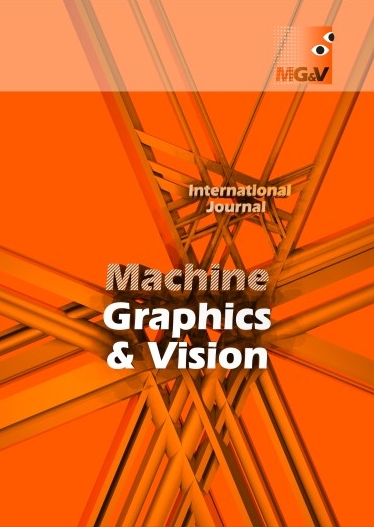Main Article Content
Coronary Artery Disease is the type of cardiovascular disease (CVD) that happens when the blood vessels which stream the blood toward the heart, either become tapered or blocked. Of this, the heart is incapable to push sufficient blood to encounter its requirements. This would lead to angina (chest pain). CVDs are the leading cause of mortality worldwide. According to WHO, in the year 2019 17.9 million people deceased from CVD. Machine Learning is a type of artificial intelligence that uses algorithms to help analyse large datasets more efficiently. It can be used in medical research to help process large amounts of data quickly, such as patient records or medical images. By using Machine Learning techniques and methods, scientists can automate the analysis of complex and large datasets to gain deeper insights into the data. Machine Learning is a type of technology that helps with gathering data and understanding patterns. Recently, researchers in the healthcare industry have been using Machine Learning techniques to assist with diagnosing heart-related diseases. This means that the professionals involved in the diagnosis process can use Machine Learning to help them figure out what is wrong with a patient and provide appropriate treatment. This paper evaluates different machine learning models performances. The Supervised Learning algorithms are used commonly in Machine Learning which means that the training is done using labelled data, belonging to a particular classification. Such classification methods like Random Forest, Decision Tree, K-Nearest Neighbour, XGBoost algorithm, Naive Bayes, and Support Vector Machine will be used to assess the cardiovascular disease by Machine Learning.
Article Details
D. Cournapeau, M. Brucher, F. Pedregosa, et al. scikit-learn. Machine Learning in Python, 2023. https://scikit-learn.org.
R. Detrano, A. Jánosi, W. Steinbrunn, et al. Heart Disease. In UC Irvine Machine Learning Repository. 1988. https://doi.org/10.24432/C52P4X.
G. Moody and R. Mark. MIT-BIH Arrhythmia Database, 2005. https://doi.org/10.13026/C2F305.
S. Guruprasad, V. L. Mathias, and W. Dcunha. Heart disease prediction using machine learning techniques. In Proc. 2021 5th Int. Conf. Electrical, Electronics, Communication, Computer and Optimization Techniques (ICEECCOT), pages 762-766, Mysuru, India, 10-11 Dec 2021. IEEE. https://doi.org/10.1109/ICEECCOT52851.2021.9707966. (Crossref)
T. Kasbe and R. S. Pippal. Design of heart disease diagnosis system using fuzzy logic. In Proc. 2017 Int. Conf. Energy, Communication, Data Analytics and Soft Computing (ICECDS), pages 3183-3187, Chennai, India, 01-02 Aug 2017. IEEE. https://doi.org/10.1109/ICECDS.2017.8390044. (Crossref)
N. V. S. Keerthika Dulam, K. Sai Koushik, S. Sakhamuri, Ch. Hyndavi, and G. Sindu. Heart disease prediction with machine learning approaches. In Proc. 4th Int. Conf. Communications and Cyber Physical Engineering (ICCCE 2021), volume 828 of Lecture Notes in Electrical Engineering, pages 1155-1166. Springer, 2022. https://doi.org/10.1007/978-981-16-7985-8_120. (Crossref)
S. Khan, S. M. D. Rizvi, V. Ahmad, et al. Magnetic nanoparticles: properties, synthesis and biomedical applications. Current Drug Metabolism, 16(8):685-704, 2015. https://www.ingentaconnect.com/content/ben/cdm/2015/00000016/00000008/art00009. (Crossref)
J. K. Kim and S. Kang. Neural network-based coronary heart disease risk prediction using feature correlation analysis. Journal of Healthcare Engineering, 2017:2780501, 2017. https://doi.org/10.1155/2017/2780501. (Crossref)
Korea Disease Control and Prevention Agency. Korea National Health and Nutrition Examination Survey (KNHANES), 2014-present. https://knhanes.kdca.go.kr.
L. B. Lusted. Signal detectability and medical decision-making. Science, 171:1217-1219, 1971. https://doi.org/10.1126/science.171.3977.1217. (Crossref)
G. Malavika, N. Rajathi, V. Vanitha, and P. Parameswari. Heart disease prediction using machine learning algorithms. Bioscience Biotechnology Research Communications, 13(11):24-27, 2020. Special Issue. https://doi.org/10.21786/bbrc/13.11/6. (Crossref)
B. Shiva Shanta Mani and V. M. Manikandan. Heart disease prediction using machine learning. In G. Rani and P. K. Tiwari, editors, Handbook of Research on Disease Prediction Through Data Analytics and Machine Learning, chapter 18, page 373–381. IGI Global, 2021. https://doi.org/10.4018/978-1-7998-2742-9.ch018. (Crossref)
J. Maurya and S. Prakash. Machine learning based prediction and diagnosis of heart disease using multiple models. ResearchSquare, 2023. Preprint. https://doi.org/10.21203/rs.3.rs-2642516/v1. (Crossref)
C. E. Metz. Basic principles of ROC analysis. Seminars in Nuclear Medicine, 8(4):283-298, 1978. https://doi.org/10.1016/S0001-2998(78)80014-2. (Crossref)
P. Ponikowski, S. D. Anker, K. F. AlHabib, et al. Heart failure: preventing disease and death worldwide. ESC heart failure, 1(1):4-25, 2014. https://doi.org/10.1002/ehf2.12005. (Crossref)
T. V. N. Preetam, Dr P. Kshirsagar, M. V. Krishna, and V. Meghana. ECG signal analysis and prediction of heart attack with the help of optimized neural network. Alochana Chakra Journal, 9:497-506, 2020.
Python Software Foundation. The Python Package Index (PyPI), 2023. https://pypi.org/.
M. Saw, T. Saxena, S. Kaithwas, R. Yadav, and N. Lal. Estimation of prediction for getting heart disease using logistic regression model of machine learning. In Proc. 2020 Int. Conf. Computer Communication and Informatics (ICCCI), pages 1-6, Coimbatore, India, 22-24 Jan 2020. IEEE. https://doi.org/10.1109/ICCCI48352.2020.9104210. (Crossref)
Statlog (Heart). In UC Irvine Machine Learning Repository. https://doi.org/10.24432/C57303.
K. Subhadra and B. Vikas. Neural network based intelligent system for predicting heart disease. International Journal of Innovative Technology and Exploring Engineering, 8(5):484-487, 2019. https://www.ijitee.org/portfolio-item/D2770028419/.
UC Irvine Machine Learning Repository, 2023. https://archive.ics.uci.edu.
K. Ukoba and T.-C. Jen. Biochar and application of machine learning: A review. In M. Bartoli, M. Giorcelli, and A. Tagliaferro, editors, Biochar - Productive Technologies, Properties and Applications, chapter 14. IntechOpen, Rijeka, 2022. https://doi.org/10.5772/intechopen.108024. (Crossref)
Diego Vidaurre, Concha Bielza, and Pedro Larrañaga. A survey of L1 regression. International Statistical Review, 81(3):361-387, 2013. https://doi.org/10.1111/insr.12023. (Crossref)
A. S. Wale, S. S. Sonawani, and S. C. Karande. ECG signal analysis and prediction of heart attack with the help of optimized neural network using Genetic Algorithm. In Proc. Int. Conf. Emerging Trends in Engineering, Technology, Science and Management, Greater Noida, India, 2017. IIMT College of Engineering.
I. Yekkala and S. Dixit. Prediction of heart disease using random forest and rough set based feature selection. International Journal of Big Data and Analytics in Healthcare, 3(1):1-12, 2018. https://doi.org/10.4018/IJBDAH.2018010101. (Crossref)





